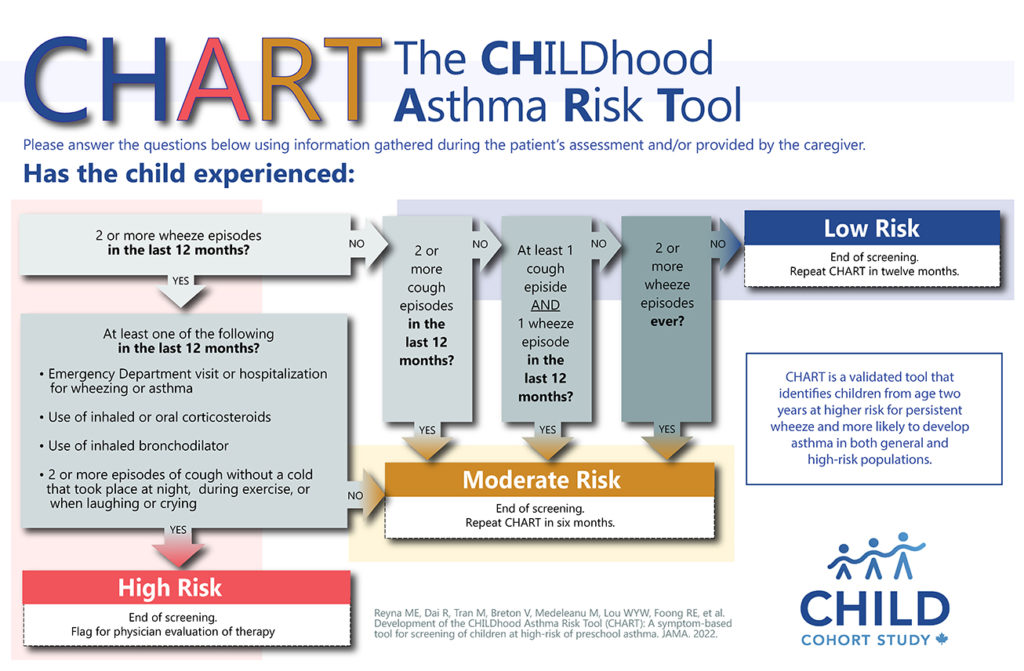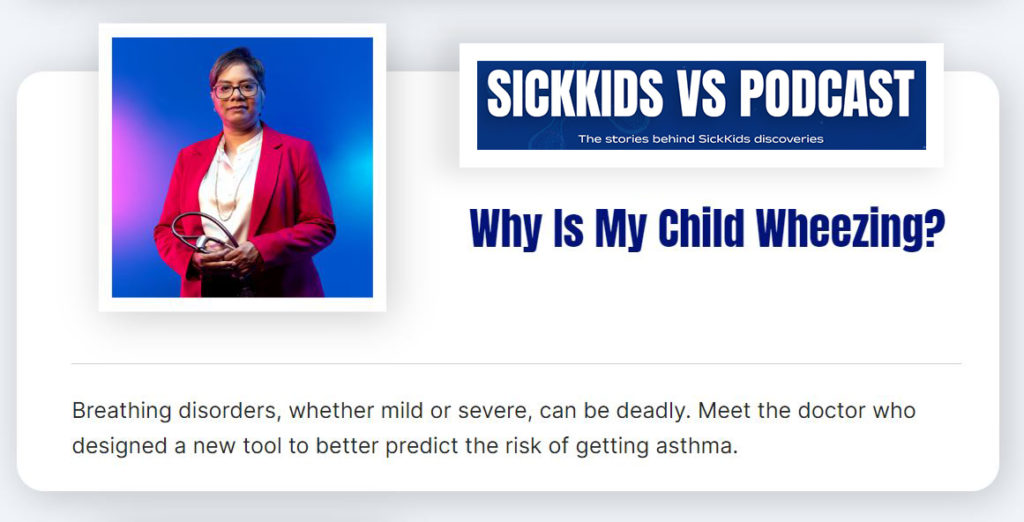
A team of CHILD researchers has developed a simple new symptom-based screening tool that detects asthma risk in children as young as two years of age.
The efficacy of the tool—the CHILDhood Asthma Risk Tool, or CHART—is detailed in a study published in the highly influential Journal of the American Medical Association (JAMA).
CHART categorizes children’s risk of future asthma and persistent symptoms as ‘High,’ ‘Moderate’ or ‘Low,’ based on information reported before age three. The tool recommends follow-up actions for each group.
“The beauty of CHART, the new tool we have developed, is that it can be used by family doctors or nurses in a low-resource primary care setting,” notes the study’s co-first author, Myrtha E Reyna-Vargas, who is an M.Sc. and a biostatistician at The Hospital for Sick Children (SickKids).
“It is non-invasive; it can be done on-the-spot and in-the-moment; it is cost-free and it requires no special equipment. Now that we have shown CHART’s benefits in the CHILD study, we are working towards validating its use prospectively in clinical practice.”
In the study, CHART was applied to data from 2,354 children participating in CHILD. Senior authors on the study include CHILD Director Dr. Padmaja Subbarao and CHILD Founding Director Dr. Malcolm Sears.
From information about the children’s wheezing and coughing episodes, use of asthma medications, and related hospital visits at three years of age, CHART was able to predict with 91% accuracy which of these kids would have persistent wheeze—a key indicator of asthma—by age five.
Of those children evaluated by CHART to be at high risk of asthma at age three, 50% were diagnosed by in-study physicians as having asthma by five years of age.
Overall, CHART was found to be more accurate at predicting persistent wheeze, asthma, and related health care usage than other standard diagnostic methods.
The study’s findings using CHILD data were also validated by testing CHART’s performance against data from two additional cohort studies: the Canadian CAPPS Cohort and the Australian Raine Study. Not only did CHART also perform well within these cohorts, but—thanks to data available through the CAPPS Cohort—it was shown to be effective when applied to data from children as young as two years of age.
“We designed CHART to be a pragmatic screening tool for the use of busy primary care givers,” says the study’s co-first author Ruixue (Vera) Dai, an M.Sc. and a biostatistician at SickKids.
“With information that can be easily gathered, CHART could be incorporated into electronic medical records as a routine assessment. These kids can then be evaluated more closely, their conditions treated and managed better, and many hospitalizations can be avoided.”
See the Key Discovery profile for this finding | SickKids announcement
WHY IS MY CHILD WHEEZING?
SickKids VS Breathlessness
In this SickKids podcast, meet Hannah and her mother, and hear how Hannah’s life was changed when she met CHILD Director Dr. Padmaja Subarao. Thanks to Dr. Subbarao and the simple diagnostic tool she developed based on findings out of CHILD, Hannah finally had her asthma correctly diagnosed and managed.


